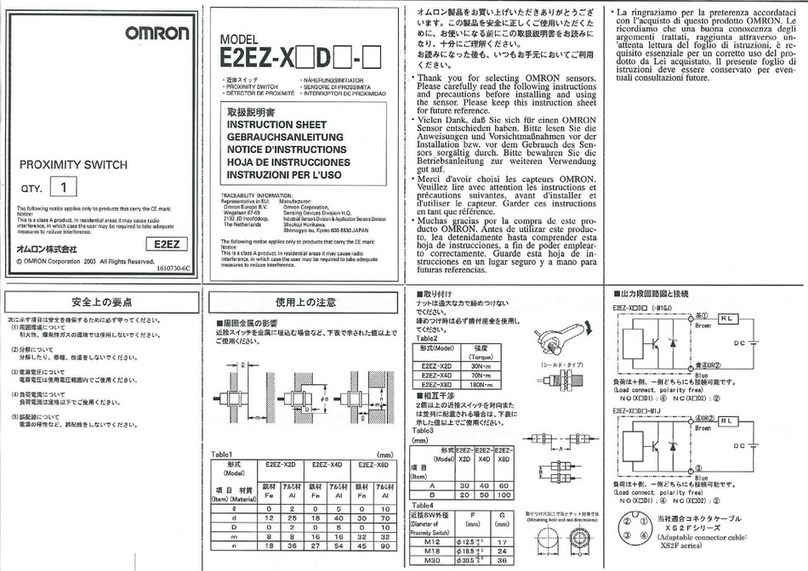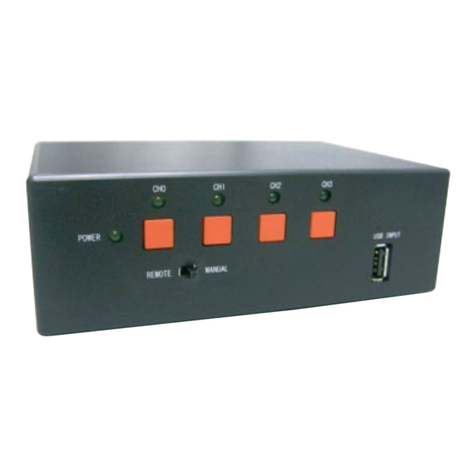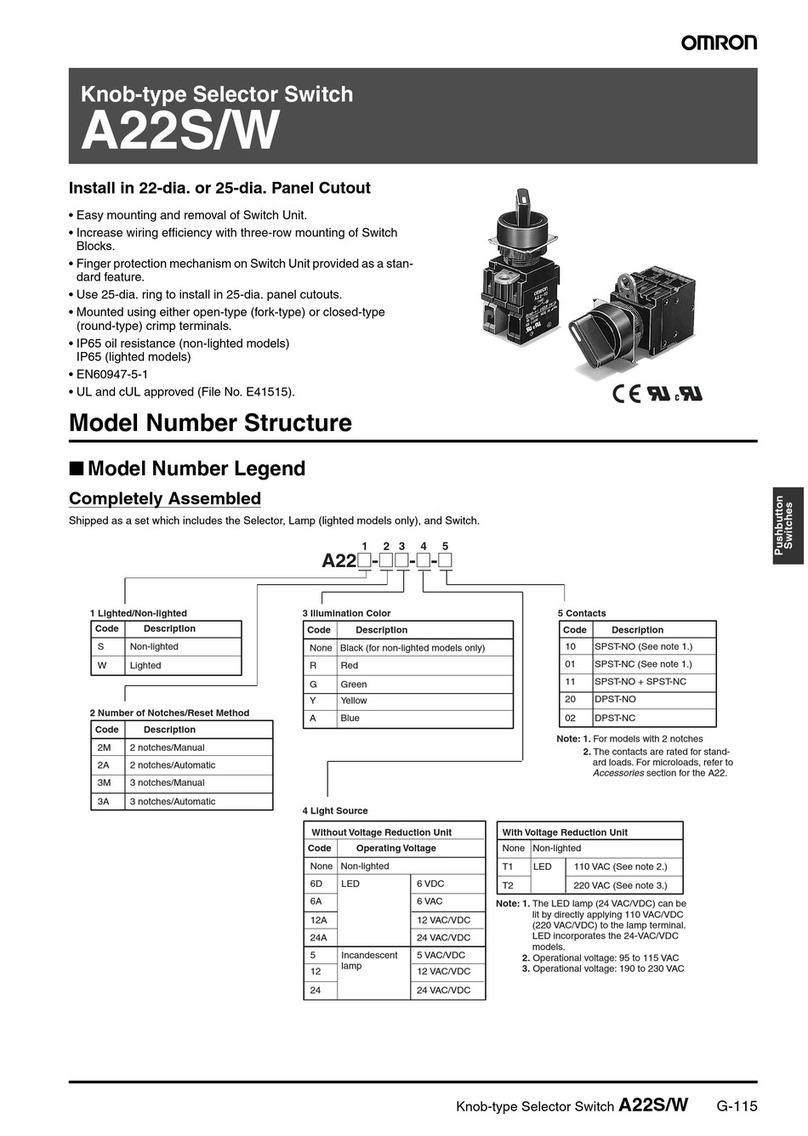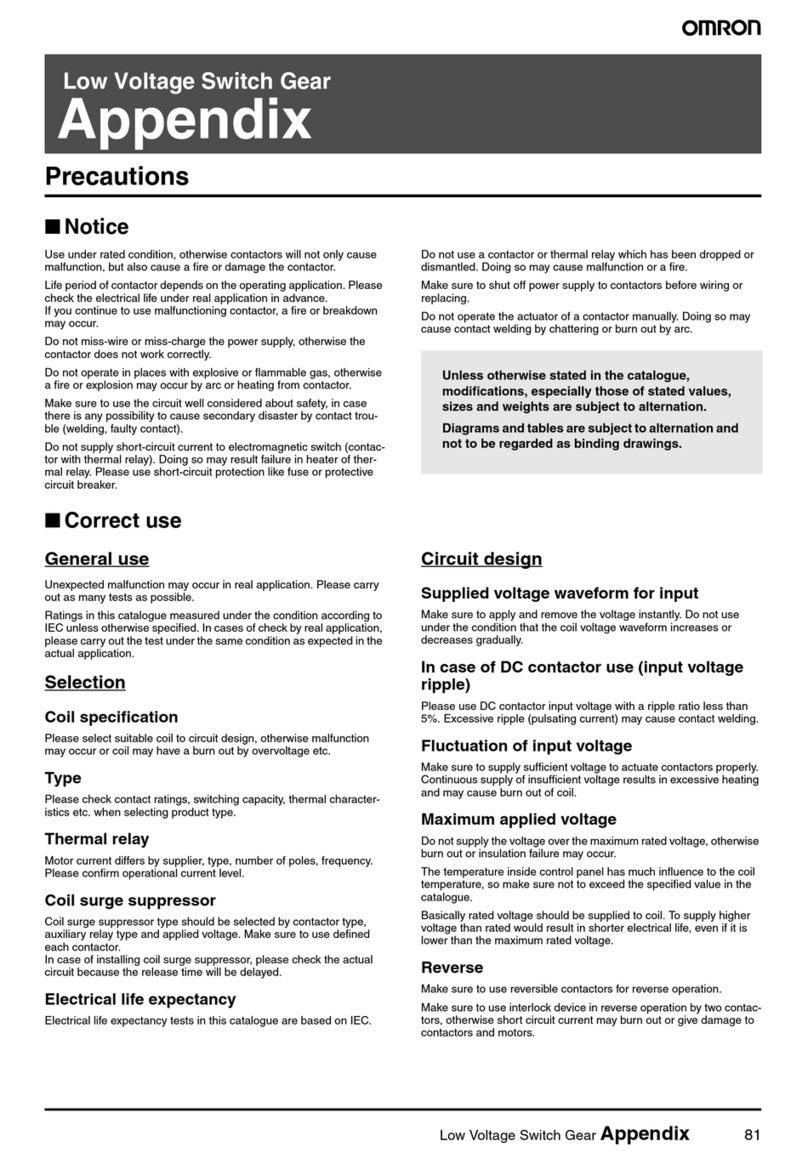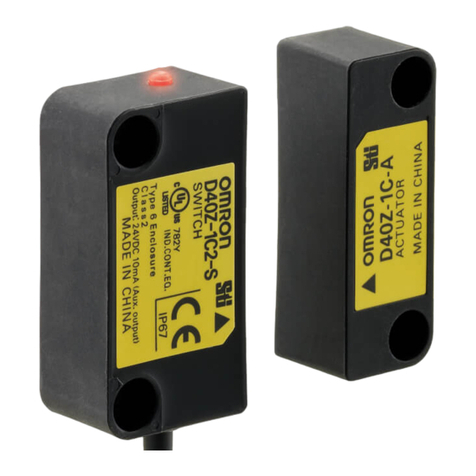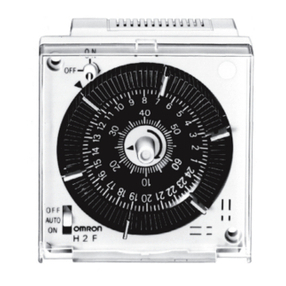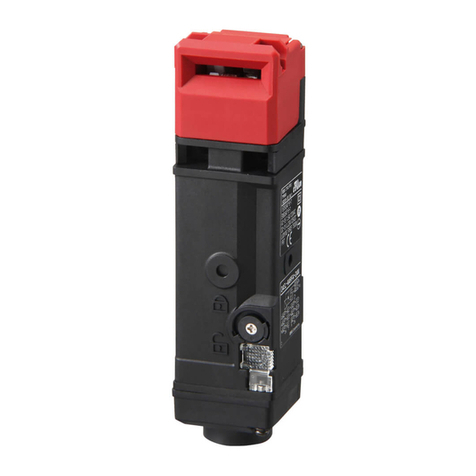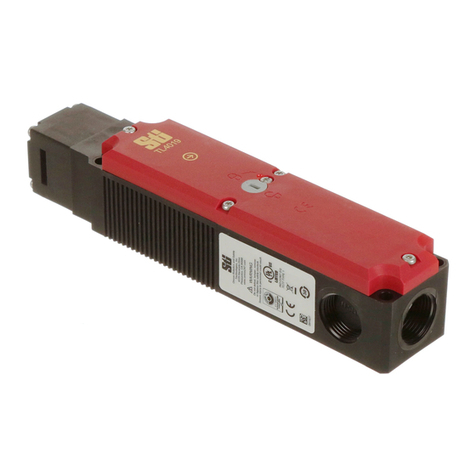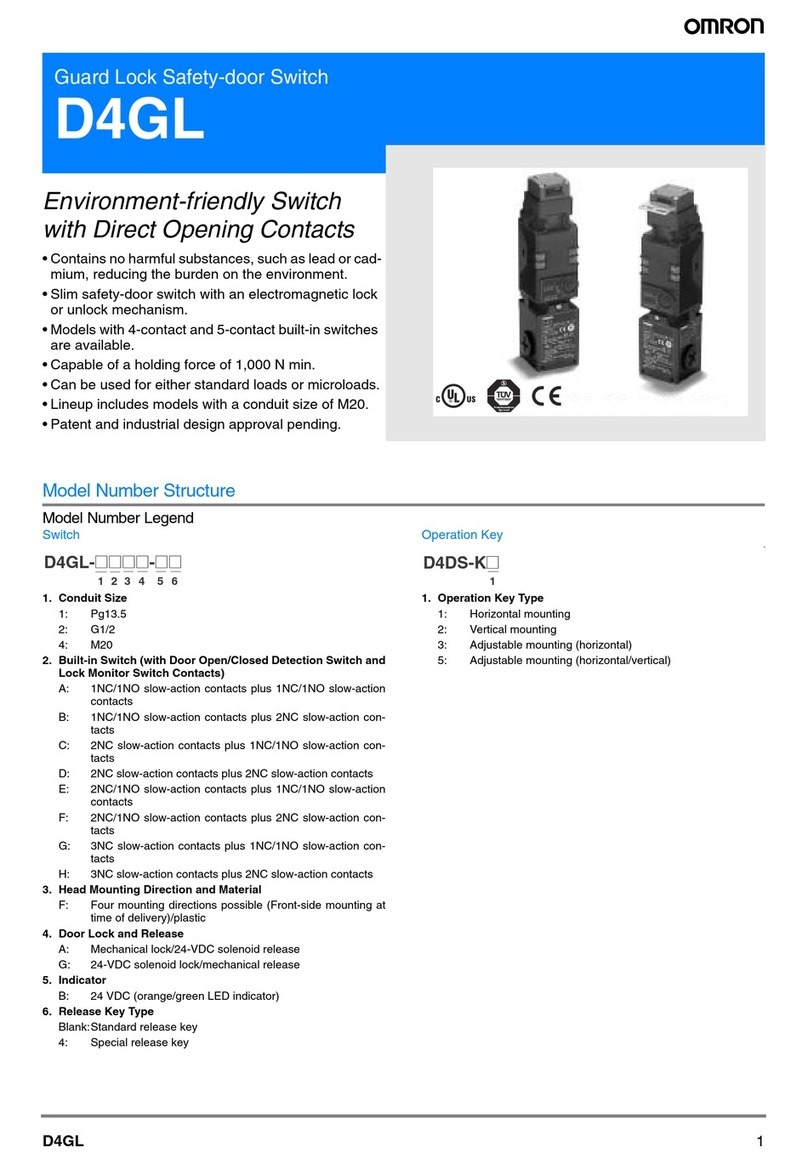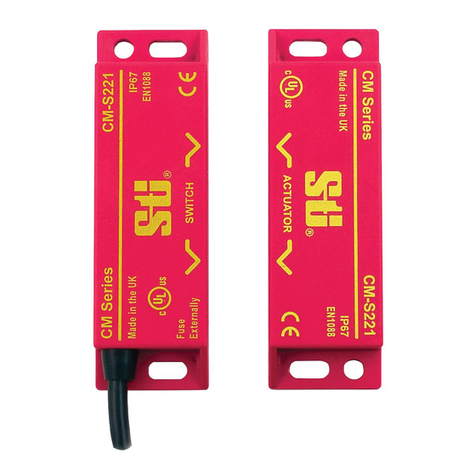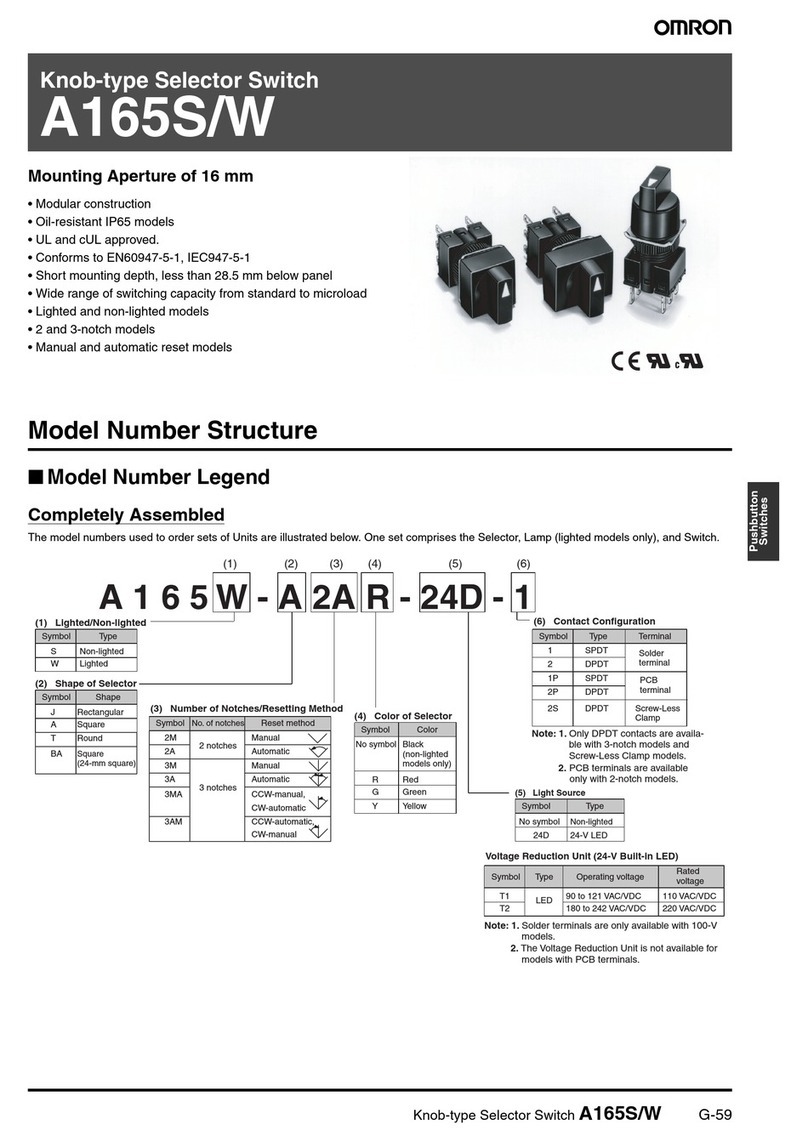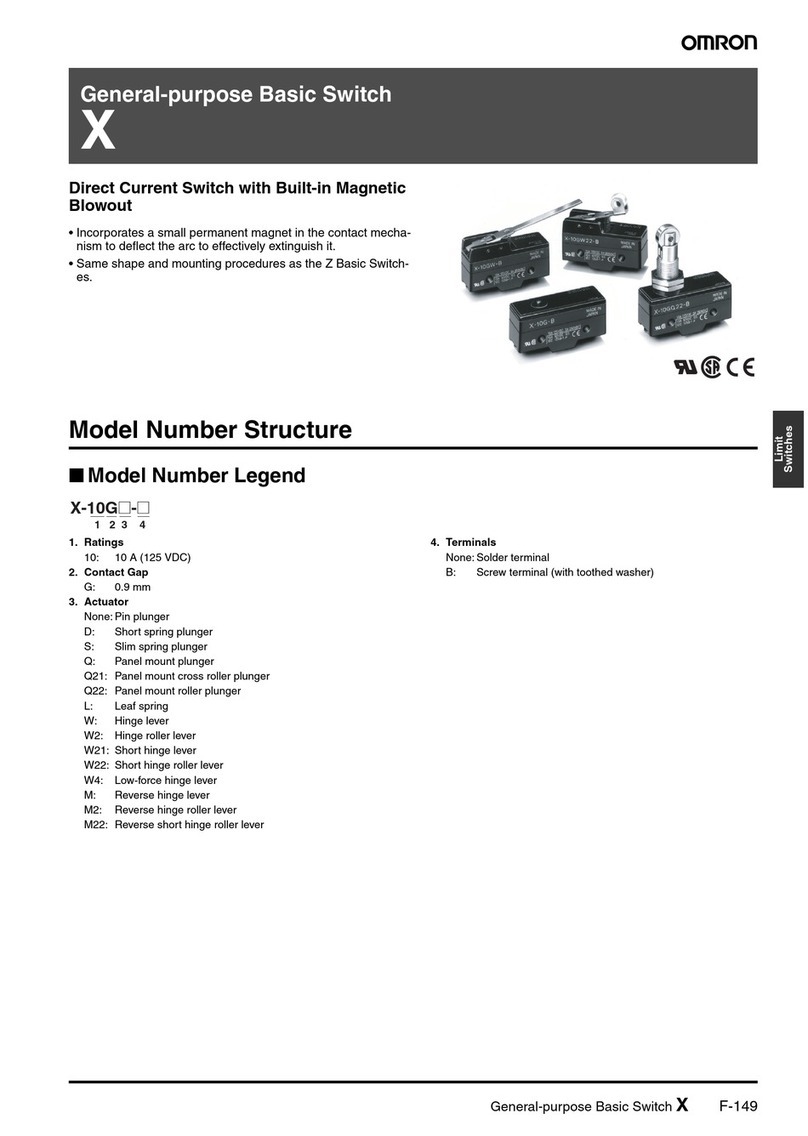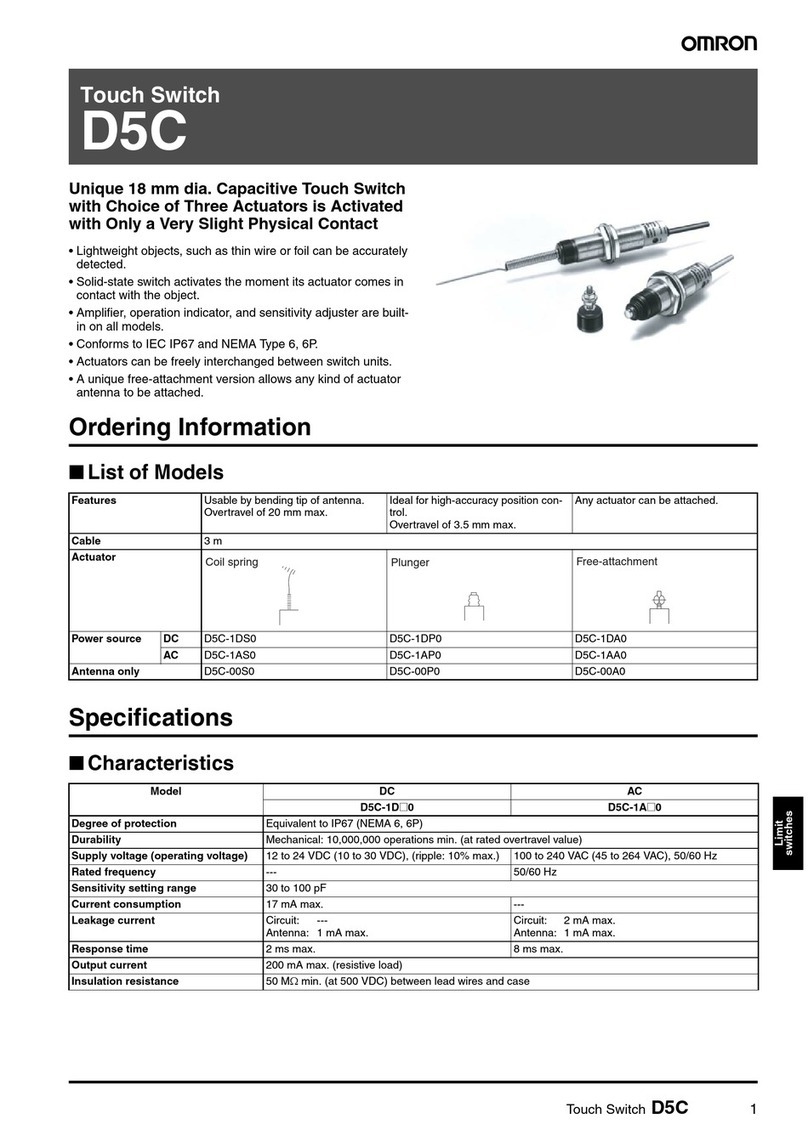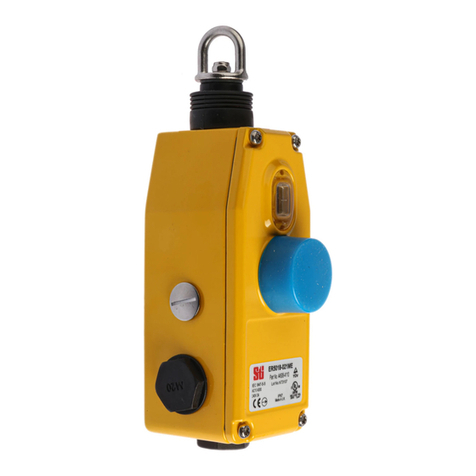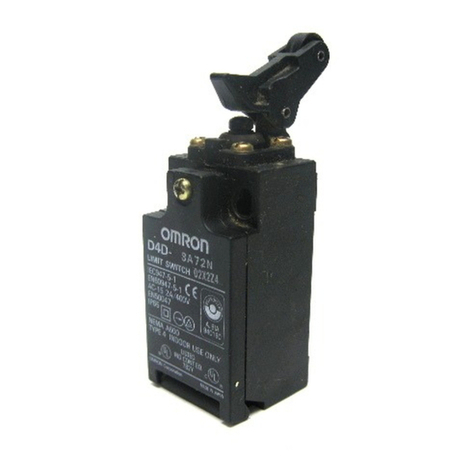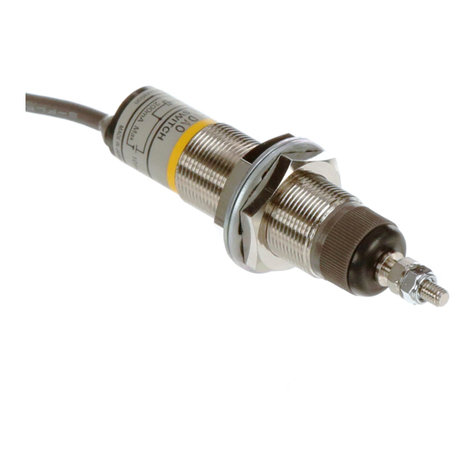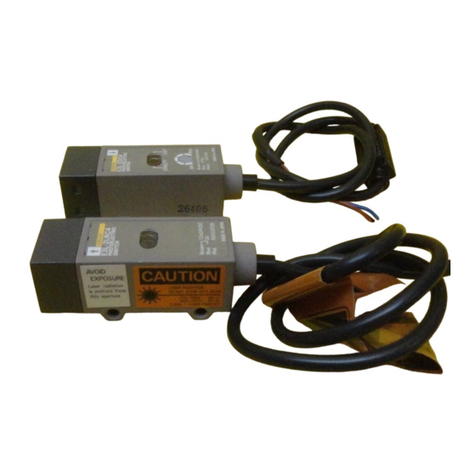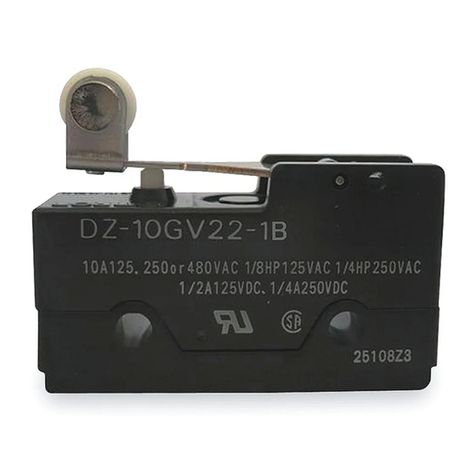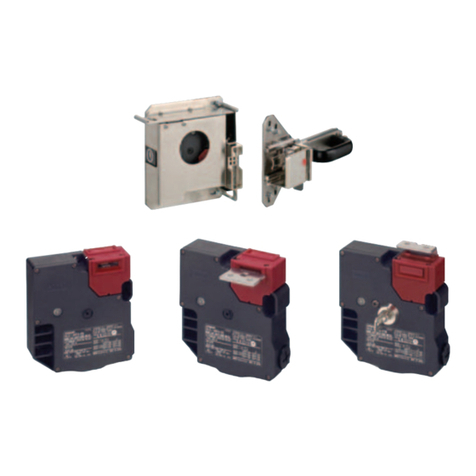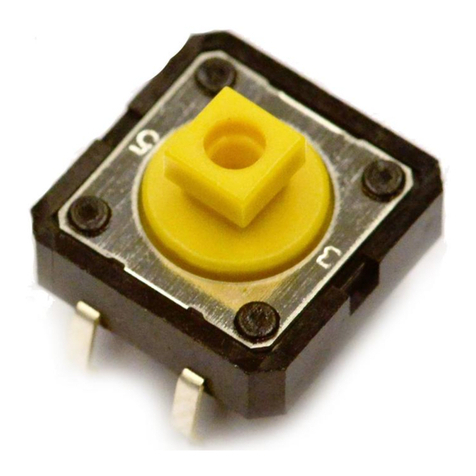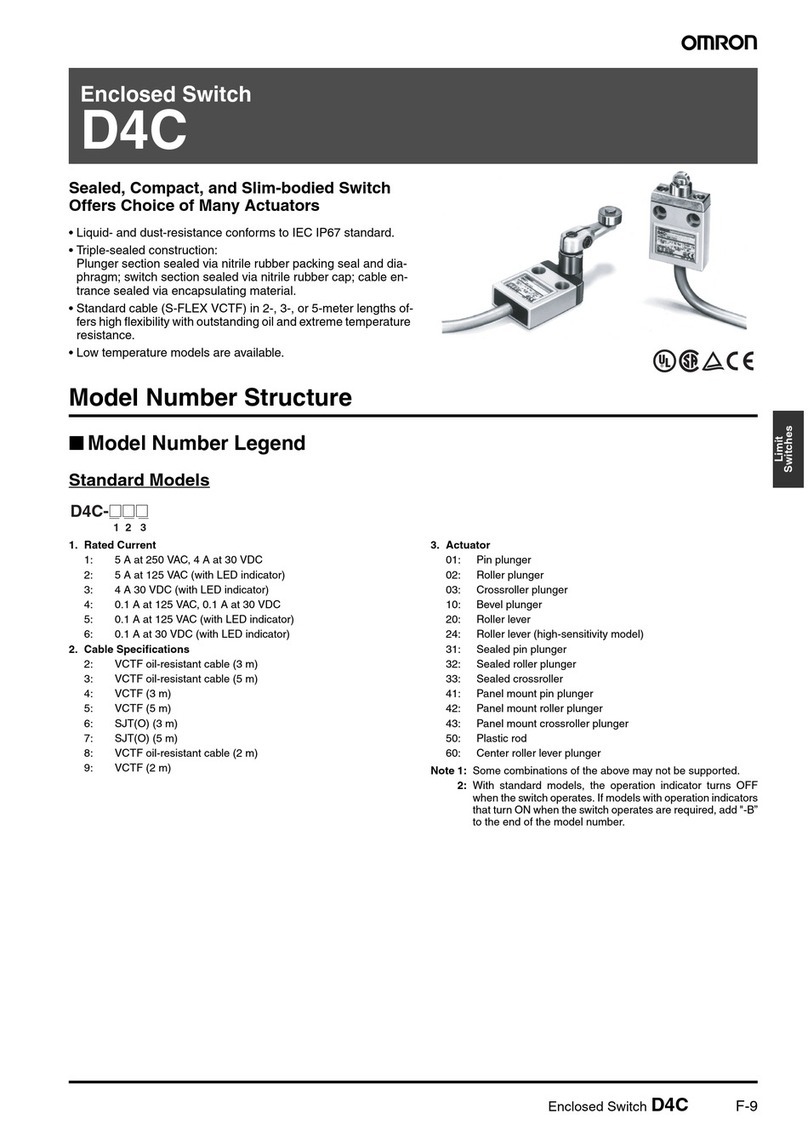
Technical Guide for Limit Switches
Contact Protective Circuit
Apply a contact protective circuit to increase the contact durability,
prevent noise, and suppress the generation of carbide or nitric acid.
Be sure to apply the contact protective circuit correctly, otherwise an
adverse effect may occur.
The following provides typical examples of contact protective circuits.
If the Switch is used in an excessively humid location for switching a
load that easily generates arcs, such as an inductive load, the arcs
may generate NOx, which will change into HNO3if it reacts with
moisture.
Consequently, the internal metal parts may corrode and the Switch
may fail. Be sure to select the ideal contact preventive circuit from the
following.
Also, load operating times may be delayed somewhat if a contact
protective circuit (a surge killer) is used.
Typical Examples of Contact Protective Circuits
Do not apply contact protective circuits (surge killers) as shown below.
Using Switches for Micro Loads
Contact faults may occur if a Switch for a general-load is used to
switch a micro load circuit. Use switches in the ranges shown in the
diagram on the right. However, even when using micro load models
within the operating range shown here, if inrush current occurs when
the contact is opened or closed, it may increase contact wear and so
decrease durability. Therefore, insert a contact protection circuit
where necessary. The minimum applicable load is the N-level
reference value. This value indicates the malfunction reference level
for the reliability level of 60% (λ60).
The equation, λ60 = 0.5 ×10–6/operations indicates that the estimated
malfunction rate is less than 1/2,000,000 operations with a reliability
level of 60%.
Circuit example
Applicable
current Feature and details Element selection
AC DC
CR circuit
Condi-
tional *O* When AC is switched, the load impedance must
be lower than the CR impedance.
C: 1 to 0.5 μF×switching current (A)
R: 0.5 to 1 Ω×switching voltage (V)
The values may change according to the charac-
teristics of the load.
The capacitor suppresses the spark discharge of
current when the contacts are open. The resistor
limits the inrush current when the contacts are
closed again. Consider the roles of the capacitor
and resistor and determine ideal capacitance and
resistance values through testing.
Generally, use a capacitor that has a dielectric
strength of between 200 and 300 V. Use an AC ca-
pacitor for an AC circuit, i.e., a capacitor that has no
polarity.
If, however, the arc shutoff capacity between the con-
tacts is a problem at high DC voltages, it may be more
effective to connect a capacitor and resistor across
the contacts rather than the load. Performing testing
to determine the most suitable method.
OO
The operating time will be greater if the load is a re-
lay or solenoid.
Connecting the CR circuit in parallel to the load is
effective when the power supply voltage is 24 or 48
V and in parallel to the contacts when the power
supply voltage is 100 to 200 V.
Diode
method ×O
Energy stored in the coil is changed into current by
the diode connected in parallel to the load. Then
the current flowing to the coil is consumed and
Joule heat is generated by the resistance of the in-
ductive load. The reset time delay with this method
is longer than that in the CR method.
The diode must withstand a peak inverse voltage
10 times higher than the circuit voltage and a for-
ward current as high or higher than the load cur-
rent.
Diode and
Zener diode
method ×OThis method will be effective if the reset time delay
caused by the diode method is too long.
If a suitable Zener voltage is not used, the load may
fail to operate depending on the environment. Use
a Zener diode with a Zener voltage that is about 1.2
times the power supply voltage.
Varistor
method OO
This method makes use of constant-voltage char-
acteristic of the varistor so that no high voltage is
imposed on the contacts. This method causes a re-
set time delay.
Connecting a varistor in parallel to the load is effec-
tive when the supply voltage is 24 to 48 V and in
parallel to the contacts when the supply voltage is
100 to 200 V.
Select a varistor with a cut voltage Vc that satisfies
the following formula. For AC, the voltage must be
multiplied by the square root of 2.
Vc > Power supply voltage ×1.5
If Vc is set too high, effectiveness will be reduced
because high voltages will not be cut.
This circuit effectively suppresses arcs when
the contacts are OFF. When the contacts are
open, capacity is stored in the capacitor, and
short-circuit current of the capacitor will flow
when the contacts are turned ON, which may
cause contacts to weld.
This circuit effectively suppresses arcs when
the contacts are OFF. When the contacts are
ON again, however, charge current will flow to
the capacitor, which may result in contact weld.
CR
Inductive
load
Power
supply
C
R
Inductive
load
Power
supply
Inductive
load
Power
supply
Inductive
load
Power
supply
Inductive
load
Power
supply
Load
Power
supply
CCLoad
Power
supply
30
24
12
5
01 10 100 1,0000.1
1 mA
Operating range
for micro-load
models
26 mA0.16 mA
800 mW5 mW
100 mA 160 mA
Unusable
range
Voltage (V)
Current (mA)
Operating range
for standard
models
http://www.ia.omron.com/ C-3
(c)Copyright OMRON Corporation 2007 All Rights Reserved.
